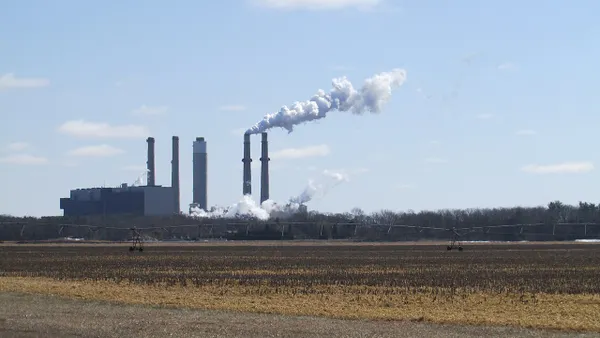As we near the end of another wildfire season that has created heartbreaking devastation across North America, it’s a natural time to again ask ourselves what we can do as an industry to mitigate the risks of wildfires in our geographies. Wildfires have burned millions of acres each year, with significant costs to human life, property, and the environment. According to the National Interagency Fire Center, in 2023, there were more than 56,000 wildfires that burned nearly 2.7 million acres in the United States alone.
While the underlying causes of wildfires are often multifaceted, including natural and human factors, utility equipment failures—such as downed power lines, transformer explosions, or faulty electrical connections—are a known contributor to some of the most devastating wildfires of the past five years. As climate change exacerbates dry conditions and lengthens fire seasons, and as grid infrastructure ages, utilities must take all possible steps to reduce the risk of equipment-related fires. Grid edge intelligence offers a critical toolset for managing these challenges and mitigating wildfire risks.
Why start at the grid edge?
Let’s start with a hypothetical situation, that isn’t out of the realm of possible fire causes. It takes a single second for a power line to fall and spark a wildfire.
Imagine that distribution wire, in that single second, as it begins to fall. Slow it down in your head.
In your mind’s eye watch it begin to float to the ground. Now imagine the dozens of homes in the area that receive the electric signal from that falling wire a tenth of a second later. Imagine those homes recognizing that a wire has failed and sending information back to the utility another tenth of a second later, and the utility automatically cutting power to the wire before the full second the wire drops is up. The wire hits the ground, but no spark. No fire.
It sounds fanciful at best. How can all of that happen within the second that a wire is falling to the ground? But it’s possible. And it’s necessary, as we’ve seen major wildfires resulting from just this scenario. AMI 2.0 meters that offer 15kHz in data sampling rates and that will soon offer up to 1MHz in data sampling, can do just that through the power of software and machine-learning based AI.
The falling wire is a dramatic example, but other scenarios, such as faulty connections and failing transformers can more easily be spotted from the edge and taken care of before they spark a fire. It works because multiple smart meters, registering electrical anomalies at the meter with software can triangulate where on the distribution grid the issue sits.
What kind of meter can actually do that?
AMI 2.0 meters serve a large variety of purposes, from consumer engagement, and DER management, to fault detection. As utilities investigate AMI 2.0 meters that can serve these and wildfire mitigation purposes, it’s important to remember that not all meters are created equal. Meters should be evaluated on four different criteria: data; computation, memory and storage; networking; and, software and security.
Data
Today, we have AMI 2.0 meters available with embedded intelligence that can process 50 million times as much data as the 15-minute interval data provided by first generation smart meters. This enables a detailed, real-time view of the entire distribution grid. High resolution, real time data sampling enables both the detection and the localization of operational issues on the grid by analyzing small variations in voltage and current waveforms (e.g. transformers arcing, vegetation hitting power lines, etc.)
Computation, memory and storage
AMI 2.0 meters leverage processors similar to those you find in a modern smartphone and a distributed software model where much of the processing happens locally on the meter, combined with networking and cloud-side processing where appropriate. To do this, utilities need sufficient levels of computation and memory on the meter itself. Given the current market, a reasonable minimum would be 1000 DMIPS CPU processing power, 256MB RAM memory, and 1GB Flash or other storage
Networking
Distributed computing allows for much reduced network needs, but there are still use cases dependent on networking capabilities. For many use cases, the existing utility networks are sufficient. But, for use cases that require a larger amount of data, or need real-time interaction like those required for wildfire mitigation, the network needs go beyond the existing utility networks. Current AMI 2.0 meters handle this by including WiFi support and in the future, could do this with cellular networks.
Software and security
As utilities start to shift their thinking to meters as platforms for software which can be upgraded over time, it’s possible to support evolving needs from the edge of the grid in a fluid way. But, the meters and the software environments need to be capable and secure. To support modern software stacks including the support for machine learning and AI, meters need 1) the ability to update software over the air, 2) native-level access to core computation resources, 3) support for multi-threading, and 4) security to protect meter functions from consumer software and to provide data privacy for consumer data.
Wildfires are just one of the many challenges facing our electric grid today, and as utilities explore tools that serve many purposes, it’s critical that they look to the grid edge, where modern smart meters have the potential to significantly improve wildfire mitigation strategies, while offering a software-upgradeable platform for dealing with our grid’s most pressing future challenges.










